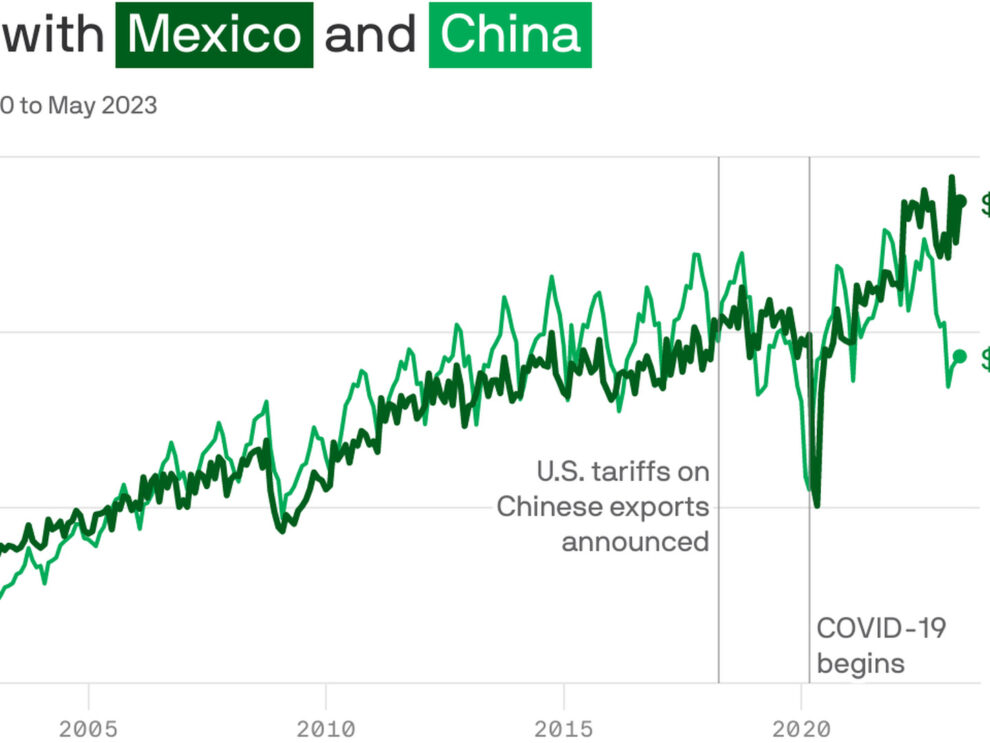Mexico supplanted China this year as the United States’ top trading partner.
Why it matters: The milestone reflects a real shift in the dynamics of the global economy — away from prioritizing low prices and greater efficiency (via super fragile supply chains) to something more nuanced.
- “Today’s global economic relationships encompass a myriad of concerns, among them national security, climate policy and supply-chain resiliency,” writes Luis Torres, senior business economist at the Dallas Fed in a piece out this week highlighting the change.
- Declining trade with China means rising costs for U.S. consumers and companies.
- It also reflects worsening diplomatic relations between the U.S. and China — which is concerning for reasons that go beyond economics.
Zoom out: The decline of China as the country’s top trading partner comes after years of worsening U.S.-China relations and reflects Mexico’s rise in manufacturing — hastened along by a new push to “nearshore” that work closer to the U.S.
- The auto industry accounts for nearly a quarter of the total manufacturing trade activity between the U.S. and Mexico.
- China exports more to the U.S. than the U.S. sends to China, but trade with Mexico is more balanced between imports and exports.
- For example, in some industries, products are started in U.S. plants, and finished in Mexican factories before coming back into the U.S. “We complement each other,” Torres tells Axios.
Meanwhile: The Biden administration is pushing to improve its relationship with China.
- Last week, Treasury Secretary Janet Yellen met with China’s premier, Li Qiang, a top economic aid to President Xi Jinping.
- More visits from U.S. officials are expected over the summer.
Catch up quick: China emerged as the U.S.’s top trading partner courtesy of its entry into the World Trade Organization in 2001 — it surpassed Canada in 2014.
- But trade with China started declining after the Trump administration imposed restrictive tariffs on Chinese imports in 2018 — and China responded with retaliatory tariffs. They further declined when the pandemic twisted up supply chains around the globe.
State of play: The Biden administration left those tariffs in place. Today, the average U.S. tariff on Chinese imports is 19.3%, while China’s average tariff on U.S. imports is 21.2%, per data cited by the Peterson Institute for International Economics.
- This is far more than the 9% paid by other WTO members, who have “most-favored-nation” status, Torres writes.
- Mexico and the U.S. trade with far fewer barriers, part of the free trade deal formerly known as NAFTA, renegotiated as the United States-Mexico-Canada Agreement in 2020.
Source : AXIOS










